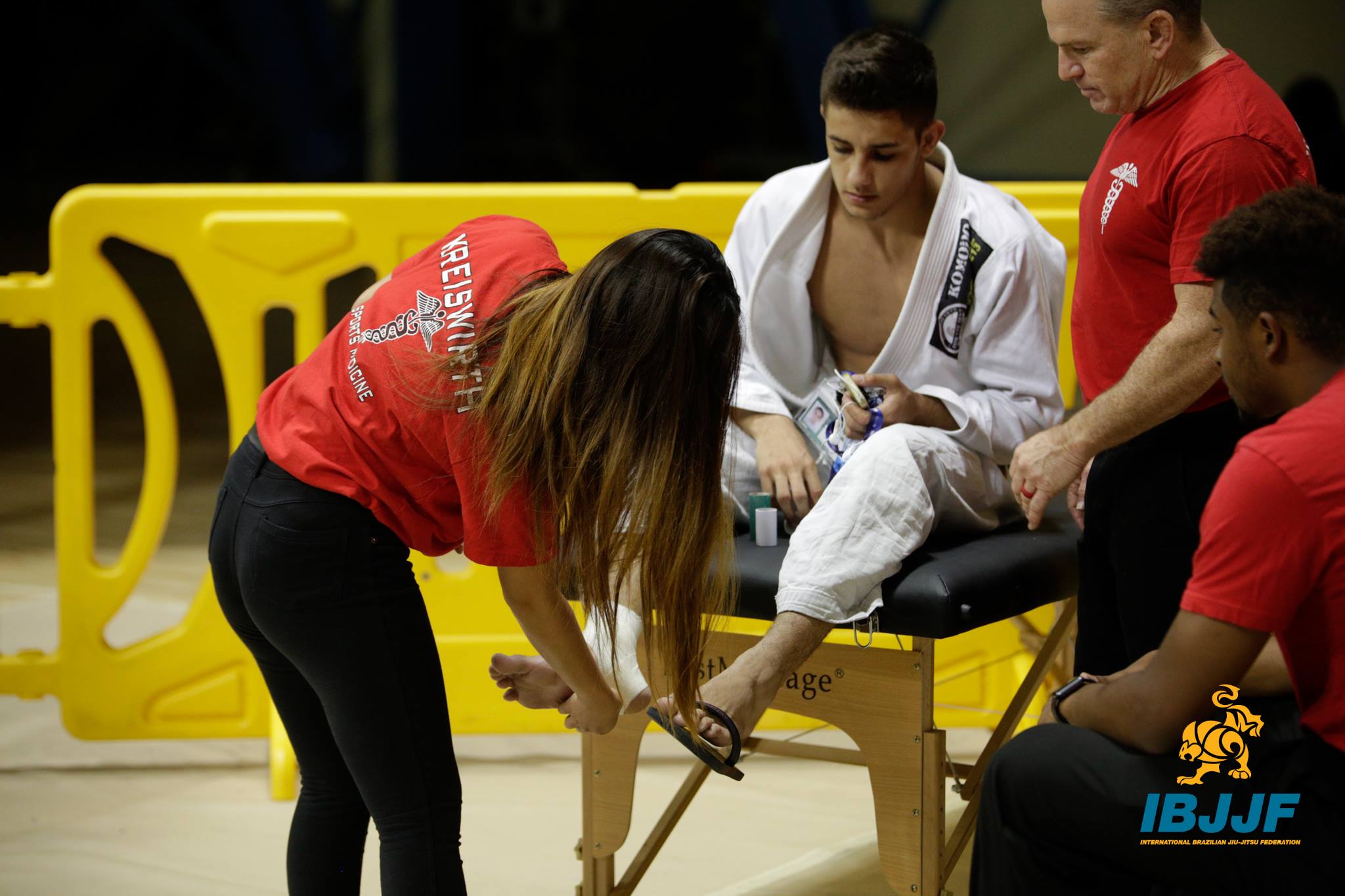BJJ Injuries Over Time /// By: Dr. Ethan M. Kreiswirth, PhD, ATC
As the Medical Director and Coordinator for IBJJF and NABJJF events in the United States, I’ve seen my fair share of injuries. This journey began in 1998, when I covered my first BJJ tournament held at Cal State Dominguez Hills, CA. Back then, tournaments were four mats at most and spanned roughly six to eight hours for one day only. Comparatively, today events may be four to five days in length covering 21 mats each day! Needless to say, BJJ has grown exponentially over the past 19 years.
As a blue belt and Certified Athletic Trainer (ATC), I would trade my medical services for registration to compete. Today, I run the medical business, caring for the safety and medical protocols for all fighters at Pans, Worlds, Master Worlds and the additional events for the IBJJF and NABJJF.
According to the collected injury data, blue belts at the adult level carry the majority of injury incidence at the elbow region. In other words, the number of elbow injuries at the blue belt level exceed all other belts and joint locations. In contrast, the Master level competitors show rib injuries as the highest level of injury incidence within a tournament. If I were to break it down further, older dudes get hurt more often with strains and muscle/tendon tears, while younger fighters report acute ligamentous injury.
Shot credit: Lance Emery Photography
Over the years, nothing really surprises me anymore regarding joint dislocations, blood, or unconscious fighters. If I were to recall what has challenged me as a medical provider, I’d have to say, head injuries, chest pain, and pace makers in the Master level fighters. As a black belt, I understand the competitive nature of BJJ and the willingness to push past your threshold, but the heart and the brain are the two organs you must respect and think about regarding repercussions for injuries to them. Concussions, as well as a predisposition to heart attacks, should be recognized and treated consistently to better educate the fighter, in addition to the welfare of the fighter in the long term.
While I have relocated too many joints to recall on fighters, it’s the joints that don’t relocate that create the biggest hardship. From toes, knees, shoulders, elbows, fingers and jaws, most will relocate if you’re on scene quickly. There was one instance, years back at Worlds, where a competitor was fighting a rear naked choke, and the pressure was so great, in addition to him blocking the choke with a tucked chin, that his mandible dislocated. That injury sticks in my head, because of the disfigurement he sustained. After applying traction and an inferior glide to the jaw, the temporo-madibular joints related with massive force. It was pretty awesome to feel and see. He thanked me many times that day!
Photo credit: IBJJF
Play safe, play smart!
Dr. Ethan M. Kreiswirth, PhD, ATC
Kreiswirth Sports Medicine Systems


